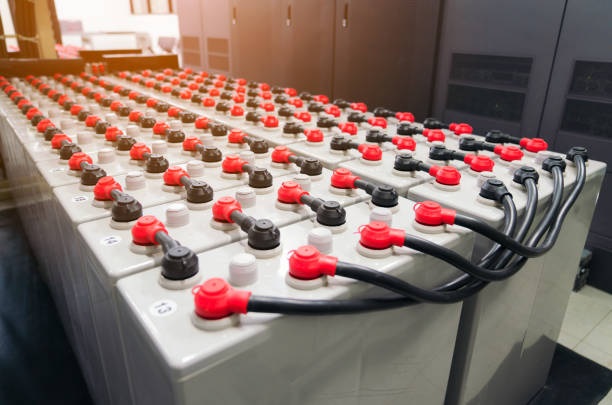???? Discover the ins and outs of Lead Acid Batteries in our comprehensive guide! Understand its benefits, safety tips, and maintenance! ????????
Lead acid batteries, common in automotive and backup power applications, are rechargeable and operate using lead dioxide and sponge lead plates submerged in sulfuric acid electrolytes to store electrical energy.
Importance of understanding Lead Acid Batteries
Grasping the intricacies of lead-acid batteries is crucial for optimizing their performance, ensuring safety, extending lifespan, and making informed choices about usage in various applications from automotive to renewable energy storage. To get more information, click on this link: https://my.rs-online.com/web/c/batteries-chargers/rechargeable-batteries/lead-acid-batteries/
Part 1: Understanding Lead Acid Batteries
Definition and types of lead-acid batteries
Lead-acid batteries consist of cells that store electrical energy using lead compounds and sulfuric acid. They come in various types, including flooded, sealed maintenance-free (SLA), gel, and AGM batteries.
The basic composition of a lead acid battery
A lead-acid battery consists primarily of lead dioxide, sponge lead plates, and a sulfuric acid electrolyte. During discharge and recharge cycles, chemical reactions between these components store and release electrical energy.
How a lead acid battery works
A lead-acid battery generates power through a chemical reaction between lead plates and sulfuric acid, producing an electrical current ideal for starting engines and providing backup energy storage.
Part 2: Benefits of Lead Acid Batteries
Longevity and durability
Longevity and durability emphasize the capacity of something to endure over time. This underscores the importance of resilience and quality, ensuring that materials or entities remain functional and effective for extended periods.
High current output
High current output refers to the generation of a large electric charge flow, providing substantial power for demanding applications. This is essential in various industries requiring robust energy performance and efficient operation.
Wide variety of applications
Numerous applications span a broad spectrum of uses, encompassing diverse fields such as technology, medicine, and entertainment. This extensive versatility underlines their significant impact on modern society and various professional domains.
Affordability and cost-effectiveness
Balancing affordability with cost-effectiveness involves selecting options that provide the best value for their price. It’s about ensuring long-term benefits and efficiency while staying within budget constraints to maximize overall savings.
Eco-friendly and recyclable
Choosing eco-friendly and recyclable products helps protect our planet. By using sustainable materials, we reduce waste and conserve resources, contributing to a healthier environment for future generations. Make conscious choices!
Part 3: Risks and Safety of Using Lead Acid Batteries
The risk associated with improper use
Misusing equipment or substances can lead to significant hazards, including potential injury, property damage, and financial loss. Proper usage reduces these risks and ensures safety for individuals and organizations alike.
Importance of Compliance with Safety Regulations
Adhering to safety regulations is crucial for minimizing risks, protecting lives, and ensuring a safe work environment. Consistent compliance not only prevents accidents but also enhances operational efficiency and legal protection.
Specific safety measures to prevent mishandling
Implementing detailed protocols, enforcing strict guidelines, and providing comprehensive training can significantly reduce mishandling incidents. Regular audits and continuous improvement of safety procedures further ensure adherence to best practices for optimal safety outcomes.
Proper usage to reduce potential dangers
Using items carefully and following guidelines can significantly minimize risks. By adhering to recommended practices, individuals ensure safety and maintain functionality, thus reducing the possibility of accidents or harm effectively.
Part 4: How to Maintain Lead Acid Batteries
Essential routine checks and services
Regular maintenance and inspections are crucial to ensure optimal performance and longevity of equipment. Consistent checks help identify potential issues early, preventing costly repairs and ensuring efficient operation.
Importance of keeping batteries clean and dry
Maintaining batteries in a clean and dry condition is crucial for ensuring their optimal performance, prolonging their lifespan, and preventing potential safety hazards such as corrosion or short circuits. Regular maintenance enhances reliability.
Proper storage and handling
Proper storage and handling ensure the safety, quality, and longevity of products. Correct techniques prevent damage, spoilage, and contamination, ultimately reducing costs and maintaining compliance with regulations and standards in various industries.
Techniques for optimizing battery life
Optimizing battery life involves adjusting settings like screen brightness and connectivity, utilizing power-saving modes, clearing background apps, regular software updates, and using optimized charging habits to enhance longevity.
Part 5: When to Replace a Lead Acid Battery
Signs of a failing battery
Indicators of a failing battery include slow engine cranking, dimming headlights, frequent need for jump-starts, and electronic devices malfunctioning. Additionally, the check engine light may illuminate due to charging issues.
How often should a battery be replaced?
Batteries typically need replacement every three to five years. Factors like usage, climate, and maintenance affect their longevity. Regular checks can prevent failure and ensure optimal performance of your device or vehicle.
Proper methods of disposing of a used battery
Proper disposal methods for used batteries include recycling at designated centres, avoiding household trash, and adhering to local guidelines. This ensures environmental safety and prevents harmful chemicals from contaminating the ecosystem.
lead acid batteries FAQs
What is the lead acid battery?
A lead-acid battery is a rechargeable energy storage device utilizing lead dioxide and sponge lead plates immersed in sulfuric acid to generate electrical power, commonly used in automotive applications.
What are the problems with lead-acid batteries?
Lead acid batteries face issues like short lifespan, low energy density, and heavyweight. Additionally, they contain toxic lead and sulfuric acid, posing environmental risks during disposal and recycling processes.
Are lead-acid batteries still used today?
Yes, lead-acid batteries are still in use today. They are commonly found in automotive applications, renewable energy systems, and backup power supplies due to their reliability and cost-effectiveness.
Are lithium batteries better than lead-acid?
Lithium batteries often outperform lead acid due to their longer lifespan, lighter weight, and higher efficiency. However, they are more expensive upfront, making the choice depend on specific needs and budget constraints.








